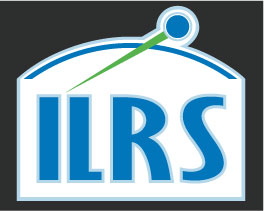Quick Links
- Normal Point Data
- Formats
- Software
- Cite the ILRS
- Revised ILRS station screening process at ILRS Operations Centers (NASA and EDC)
Normal Point Data
Normal Point Content Criteria
Historically, stations were asked to use the tabulated bin sizes below to formulate their NPs. Although seldom used, missions can request a different bin size, for operational or technical reasons.
The table below lists satellite orbital characteristics and the nominal CRD NP bin size. With the implementation of higher repetition rate systems, stations can choose to close their NPs earlier than the end of the posted NP interval if they have taken at least 1000 Full-Rate (FR) points or if the standard error of the mean does not exceed 1 mm. In this case stations may then move on to another satellite. They should not return to the original satellite until after the posted normal point interval has passed.
| Nominal Satellite Altitude (km) | Bin Size (seconds) | NPT Indicator (from old format) | Example Satellites | Comments |
|---|---|---|---|---|
| N/A | N/A | 0 | N/A | Not a normal point |
| < 500 | 5 | 1 | GRACE | |
| 550 – 800 | 15 | 3 | Sentinel-3 | |
| 800 – 2,000 | 30 | 5 | Starlette, Stella, LARES | |
| 2,000 – 5,000 | 60 | 6 | ||
| 5,000 – 8,000 | 120 | 7 | LAGEOS | |
| 8,000 – 15,000 | 180 | 300 | ||
| > 15,000 | 300 | 9 | Etalon, GNSS | |
| Lunar | Variable | 2 | Apollo, Luna |
For example, if a station achieves the 1000 FR points on LAGEOS in 1 minute, rather than the posted 2-minute interval, it should not return to take data on this LAGEOS pass until the original 2-minute interval has expired.
A significant number of stations are still operating with legacy systems at 10 Hz or below. To strengthen data quality and reliability, the ILRS urges these stations, to operate with a minimum of:
- Daytime normal points: a minimum of 6 full-rate data points
- Night-time normal points: a minimum of 3 full-rate data points
Data users should recognize that some of the legacy stations may submit normal points that fall below this minimum threshold, thereby introducing statistically weak NPs. Users may want to do some selective filtering (as above) to avoid these lower quality data that may degrade the quality of solutions depending upon the application.
Stations should include their adopted minimum NP data policy as a note in their Site Logs in Section 10 under additional information, even though normal points themselves include the number of full rate data points used in generating them.
The CRD format suggests a nominally 6-digit number (allowing for even more digits) in the normal point (11) record's "number of raw ranges" field, so we can theoretically accommodate an unlimited number of full-rate points per normal point for the kHz systems.
Normal point data are available from the ILRS Data Centers at:
- https://cddis.gsfc.nasa.gov/archive/slr/data/npt_crd/ and
https://cddis.gsfc.nasa.gov/archive/slr/data/npt_crd_v2/ - https://edc.dgfi.tum.de/pub/slr/data/npt_crd/ and
https://edc.dgfi.tum.de/pub/slr/data/npt_crd_v2/
Related information:
- NPT algorithm
- NPT Algorithm Amendment 2012
- CRD format
- Normal point bin size recommendations
- Data format and integrity algorithm
- Normal point data replacement policy
- Historic NP format (overview and details)
- Table of satellite information including NP bin size
- GSFC-formed normal points from LAGEOS full-rate data (1976 to 1993)
- Station Data Anomalies (i.e., range biases, time biases, frequency error, barometer errors, etc.)
- Normal point transmission procedures




